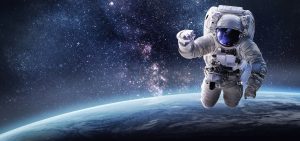An Ohio University professor helps with research that could improve astronauts’ health
By: Gabriel Scotto
Posted on:
ATHENS, Ohio (WOUB) — A team of researchers has published a study which could help revolutionize the field of space medicine.

Using a combination of big data modeling and molecular medicine, the team hopes to mitigate the risks associated with space travel and improve astronauts’ health with personalized medicine. This is to be accomplished through the collection and analysis of biological samples from astronauts.
“I study muscle. I’m interested in anything that impacts muscles: activity, diet, genetics, environmental factors,” said Nathaniel Szewczyk, a professor at the Heritage College of Osteopathic Medicine at Ohio University and one of the researchers involved with the study.
One of the main health risks associated with spaceflight is inactivity. “You’re in a confined space, you don’t necessarily have the ability to move around,” said Szewczyk. “So that will naturally create inactivity, which isn’t particularly good for your muscles.” On average, astronauts can lose up to 10% of their muscle mass in less than two weeks.
“We know that if you get enough exercise and you eat enough, it’s possible to maintain muscle mass in space,” said Szewcyzk. However, once astronauts have lost muscle mass, it is difficult for them to get it back. “We know from exercise studies that you can’t put 10% muscle mass back on by going to the gym for a week. So activity and inactivity are not the same thing.”
Szewcyzk said research into inactivity has applications closer to home. The World Health Organization lists inactivity as one of the top five causes of mortality, he said. “Despite this, we don’t put much money into studying inactivity,” he said. “The spaceflight community provides a unique contribution to understanding health on Earth, because we’re the only ones who study the problem of inactivity.”
In the past, Szewczyk has relied on using worms as a model for human muscle. “They were the first animals to have their genome sequenced,” he said. “Therefore, they’re a good tool for doing things that involve understanding the role of individual genes in muscle health.”
NASA has developed a web-based platform known as GeneLab, which houses datasets collected in both spaceflight and analogous environments. Using these datasets, NASA can replace physical models with digital models.
“These big data approaches are something NASA is particularly keen on,” said Szewczyk. “One of the things we wanted to push for was the idea that if NASA is going to be collecting this type of data, they should be collecting it from the astronauts rather than from rodents or other animal models.”
The European Space Agency has a longstanding human research program and has collected significant amounts of data from astronauts in both analogous environments on Earth and in space. “They have the ability to harmonize what type of data is collected on human subjects in various environments that are simulating elements of spaceflight with what they actually collect in the astronauts,” Szewczyk said.
Szewczyk said NASA will be implementing their recommendations. “They are going to start taking these large-scale datasets from American astronauts, storing them and making that data available for people to study.”

